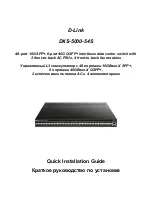
A total of 32 rules can be created and there are 4 different types of rules:
1. Schedule Rule:
This rule is used to trigger user-specified actions according to a defined time table.
This rule can be used to:
- execute
once
defined actions at specified time and weekday(s). In this case you must only specify the
start time and the weekday(s),
- execute
repeatedly
defined actions during a given time. In this case you must specify the start time, the
interval on which the rule has to be repeated and the end time.
Examples:
- The rule can be used to restart a power outlet at regular interval during a given time.
- The rule can be used to send a Syslog message at regular interval during a given time.
2. Timer Rule:
This rule can be used to trigger user-specified actions according to a defined time table.
This rule can be used to switch On or Off a power outlet at specified time and weekday(s) for a specified
time. You must define the start time, the weekday(s) and the stop time.
Example:
- The rule can be used to switch On a device every Monday and Friday from 8:00 AM (Start Time) and
switch it automatically off every Monday and Friday at 05:00 PM (Stop Time)
3. Ping Monitoring Rule:
This rule is used to control actions according to the response to a Ping command.
This rule can be used to check if a computer or any IP device is connected to the network. If the host
doesn't reply, the ePowerSwitch can automatically restart the powered device.
4. Scan Monitoring Rule:
This rule is used to control actions according to the response to a Scan command.
This rule can be used to check if a specific protocol is available on a. If the connection is not possible,
ePowerSwitch can automatically restart the powered device.
24
















































